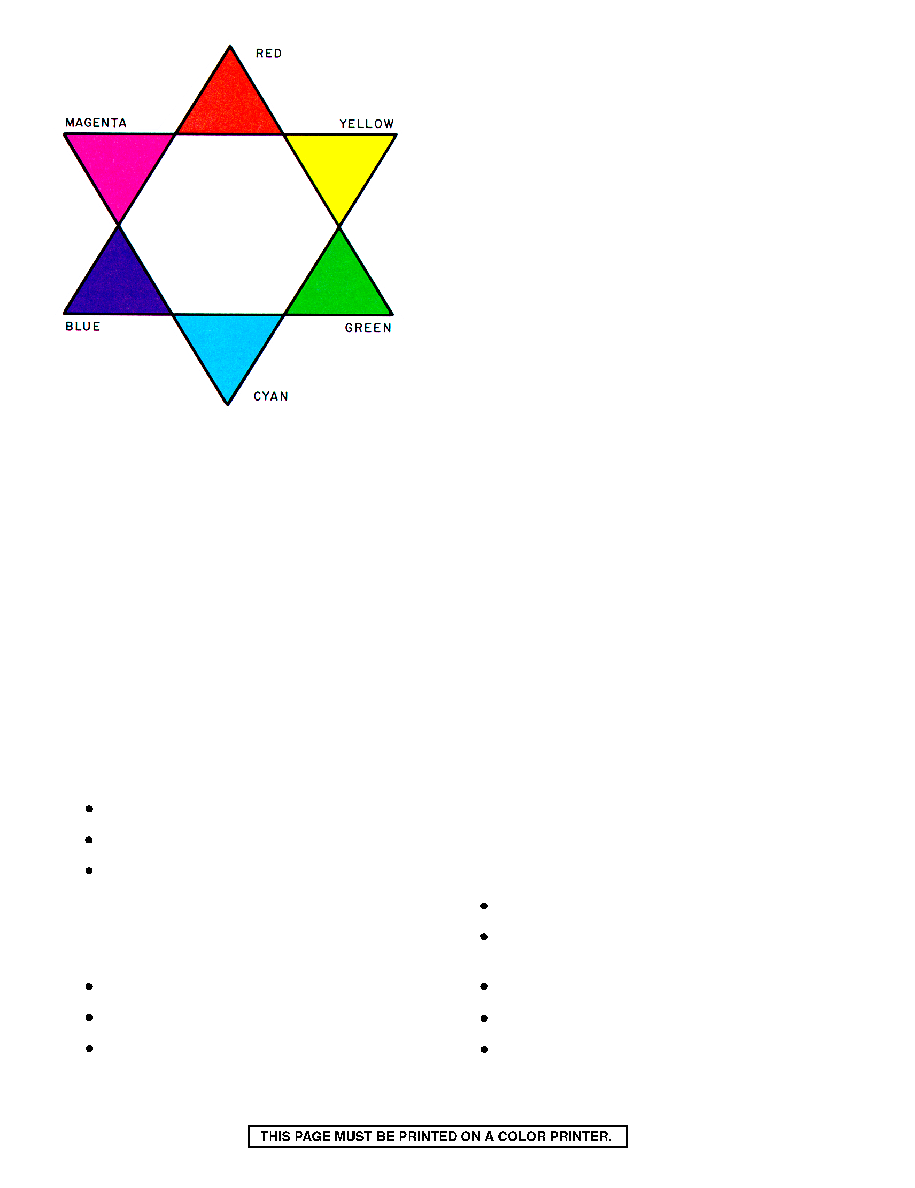
DOFMaster
for Windows
On-line
Depth of Field
Calculator
DOFMaster for Mobile Devices
On-line
Depth of Field
Table
Hyperfocal
Distance Chart
Articles
FAQ
Recommended
Books
Support
Contact
Links
Home
for Windows
On-line
Depth of Field
Calculator
DOFMaster for Mobile Devices
On-line
Depth of Field
Table
Hyperfocal
Distance Chart
Articles
FAQ
Recommended
Books
Support
Contact
Links
Home
As an Amazon Associate I earn from qualifying purchases.
![]()
will suddenly become very clear. Color printing is built
around color by subtraction.
be illustrated.
triangle, when mixed, will produce the color between
them; for example,
complementary colors and are located across from each
other; that is
so forth.
may be either full or partial, depending on the relative
strengths and amounts of the neutralizing colors; for
example, equal amounts of blue and yellow produce
neutral density. A weak blue and a strong yellow yields
a grayish yellow.
used in color printing subtract colors from the light
paper; for example, to subtract green from the light, you
subtracts a given color from the light source of the
enlarger by finding its opposite or complementary color
green from the light. First, find green on the color star.
looking across from it. You have located the color,
magenta; therefore, to remove green from the light
source, you must addmagenta filtration in the enlarger.
need additional review of light and color principles,
refer to chapter 1 of this training manual. The remainder
of this chapter should help you get a better
understanding of color printing and provide the
information you need to make good, professional
quality color prints.
Basic Photography Course

As an Amazon Associate I earn from qualifying purchases.
WWW.DOFMASTER.COM
© 2006 Don Fleming. All rights reserved.
© 2006 Don Fleming. All rights reserved.